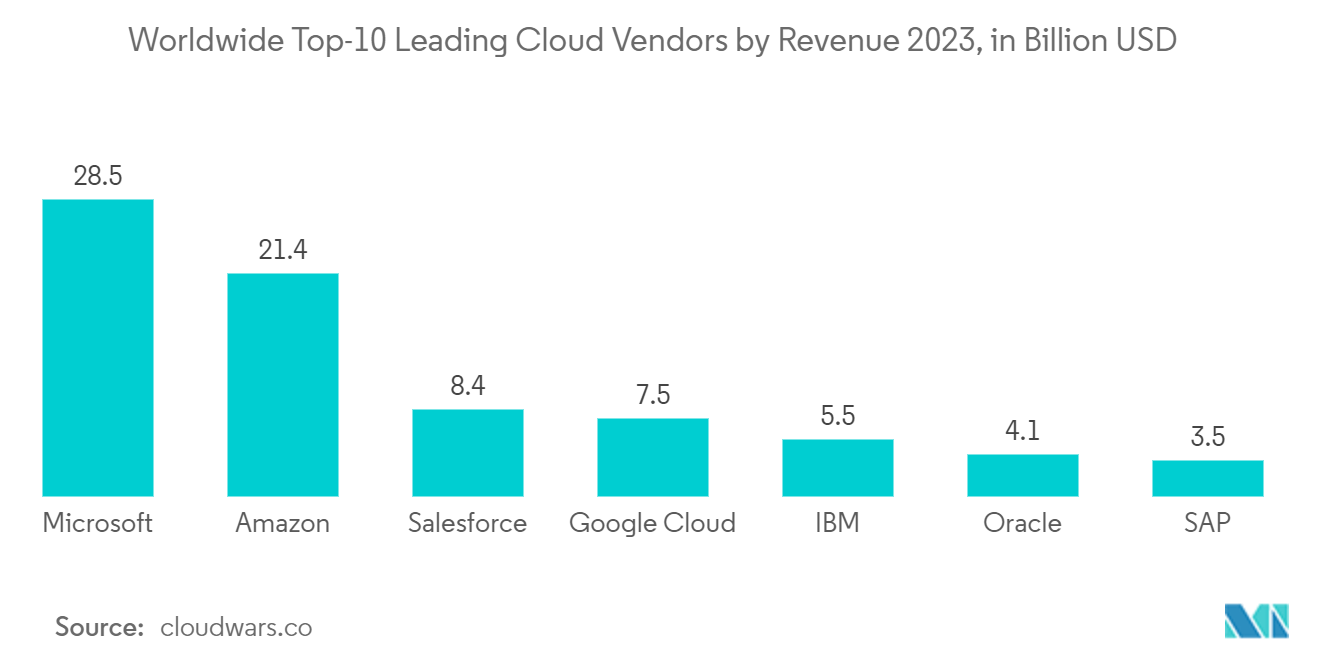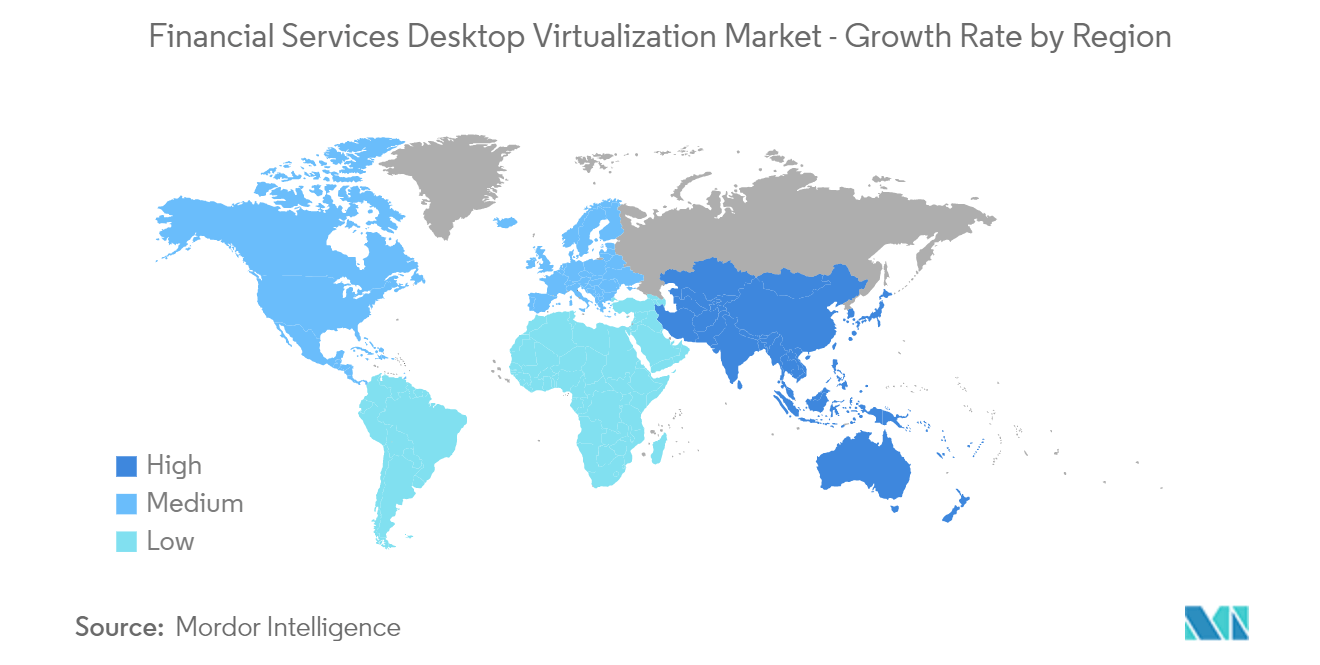Market Trends of Financial Services Desktop Virtualization Industry
Increasing Adoption of Cloud Services in Financial Institutions to Drive the Market Growth
- As financial services companies are increasingly adopting a cloud-first approach to new applications, demand for cloud-based services increased as well in the virtualization market. Moreover, most financial services firms are already utilizing some type of public cloud. According to the Google Cloud survey, a significant percentage of surveyed financial services firms (83%) report that businesses are using cloud technology as part of their main computing platforms. The most common cloud design is hybrid cloud (38%), followed by single cloud (28%) and multi-cloud (17%). Notably, 88% of respondents without a multi-cloud implementation said they plan to implement a multi-cloud plan in the next 12 months.
- According to the global 2022 Enterprise Cloud Index (ECI) released recently by Nutanix, a prominent player in enterprise cloud computing, Almost all financial services respondents (98%) have migrated one or more apps to a new IT environment in the last 12 months, most likely from conventional datacenters to private clouds, given the industry's low multi-cloud and public cloud penetration. Moreover, the American Bankers Association reported that more than 90% of financial organizations use cloud tools for some or all of their banking activities.
- Further, application streaming over the cloud is gaining popularity in the industry, with many enterprises choosing standalone application services. Cloud is preferred across sectors, as it provides better scalability, data management, and cost savings.
- Moreover, the deployment of cloud makes it easy for information to move between working environments. They may also make use of the ability to scale up their requirements and purchase additional computing power and data without having to install a physical server. More effective management of resources is enabled by this flexibility.
- Furthermore, infrastructure for virtual desktops necessitates extra storage, operational bandwidth, and software, which might require the purchase of expensive SANs and servers to house and operate hundreds of computers. VDI implementation and maintenance costs can be reduced in public cloud settings that include built-in VDI options.
- Due to the available additional layer of security, it also provides data and applications while ensuring that user experiences are maximized; desktop virtualization as a cloud service is an especially attractive option in BFSI. The primary issue of financial services remains the data security problem, which continues to be one of the main reasons why desktop virtualization is being adopted in this sector.

Asia-Pacific to Register Significant Growth Rates During the Forecast Period
- The rapid digitization of company processes, as well as the growing demand for cloud-based computing options that can enhance enterprise data protection, are a few factors driving the market in the region. Additionally, the increasing utilization of safe remote access and mobile devices propels the Asia Pacific desktop virtualization business forward.
- In the financial services industry, Asia hosts some prominent IT outsourcing destinations for a number of market players. It is expected that many emerging markets in the region will also experience higher growth rates than those of the mature economies.
- As these markets continue to grow in this trajectory, the need for financial services, such as retail banking, asset management, insurance, capital market service, and others, is also increasing. Many industry players have been increasing their presence in the region to capture the market in this fast-growing region.
- Furthermore, financial organizations in the area are increasingly turning to specialized desktop virtualization solutions to reduce hardware and maintenance expenses and ease IT administration operations. This has resulted in the fast adoption of desktop virtualization options such as Citrix XenDesktop, VMware Horizon View, and Microsoft Remote Desktop Services (RDS). Furthermore, the growing demand for better user experience and efficiency propels the Asia Pacific desktop virtualization market.
- The growing tendency of remote work and the need to provide workers with seamless access to work programs and data from any location has led to the adoption of Desktop Virtualization technology by organizations. This effectively solved the problem of workers' restricted geographic accessibility, increasing their productivity and allowing more effective organizational decision-making. Furthermore, the market's expansion has been anticipated to be fueled by the growing popularity of Bring Your Own Device (BYOD) and Workplace-as-a-Service (WaaS) among businesses in the area.


